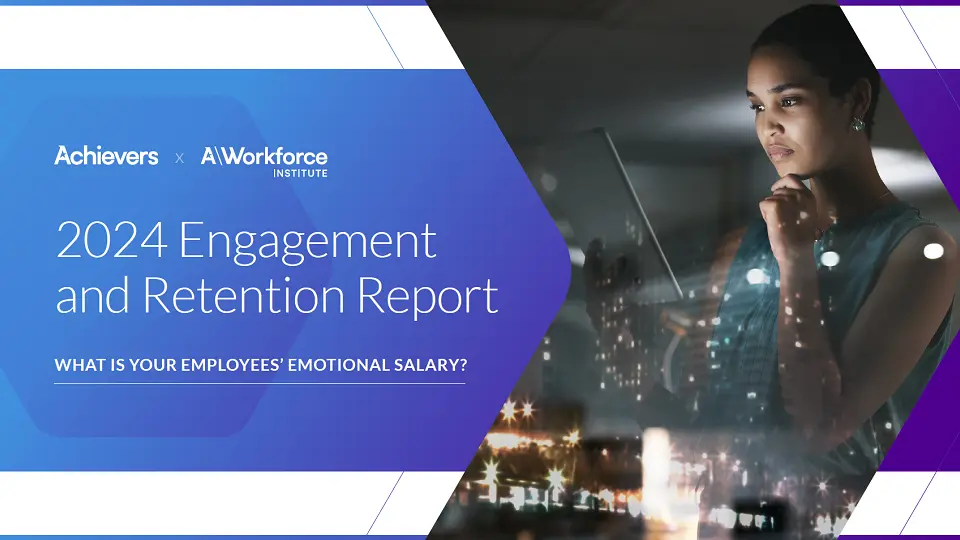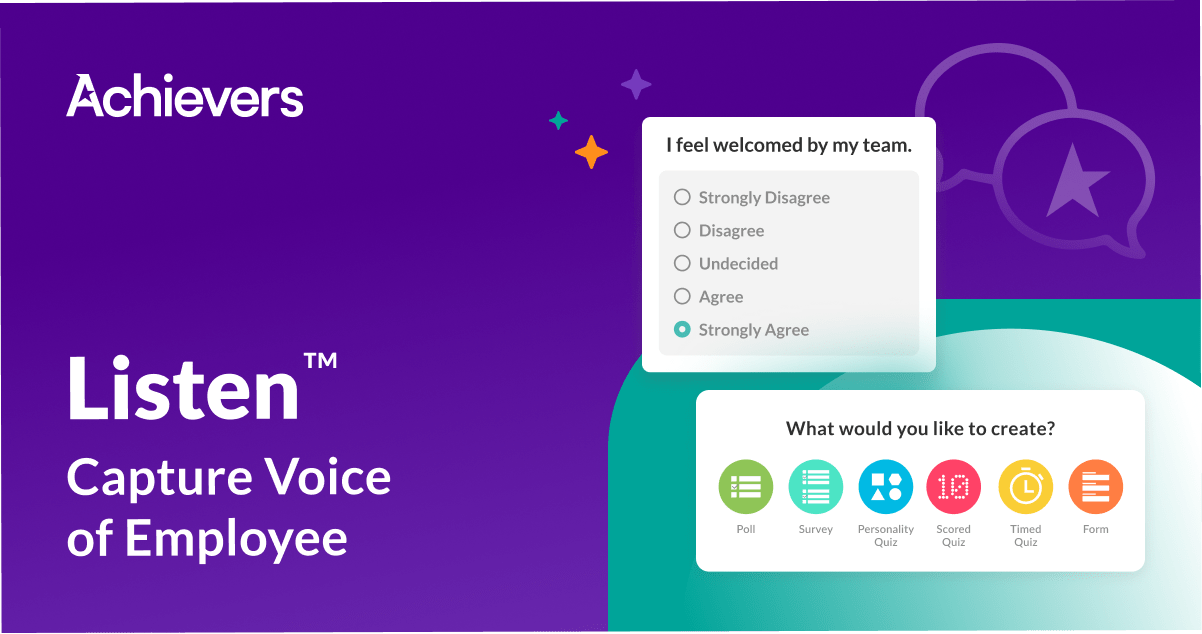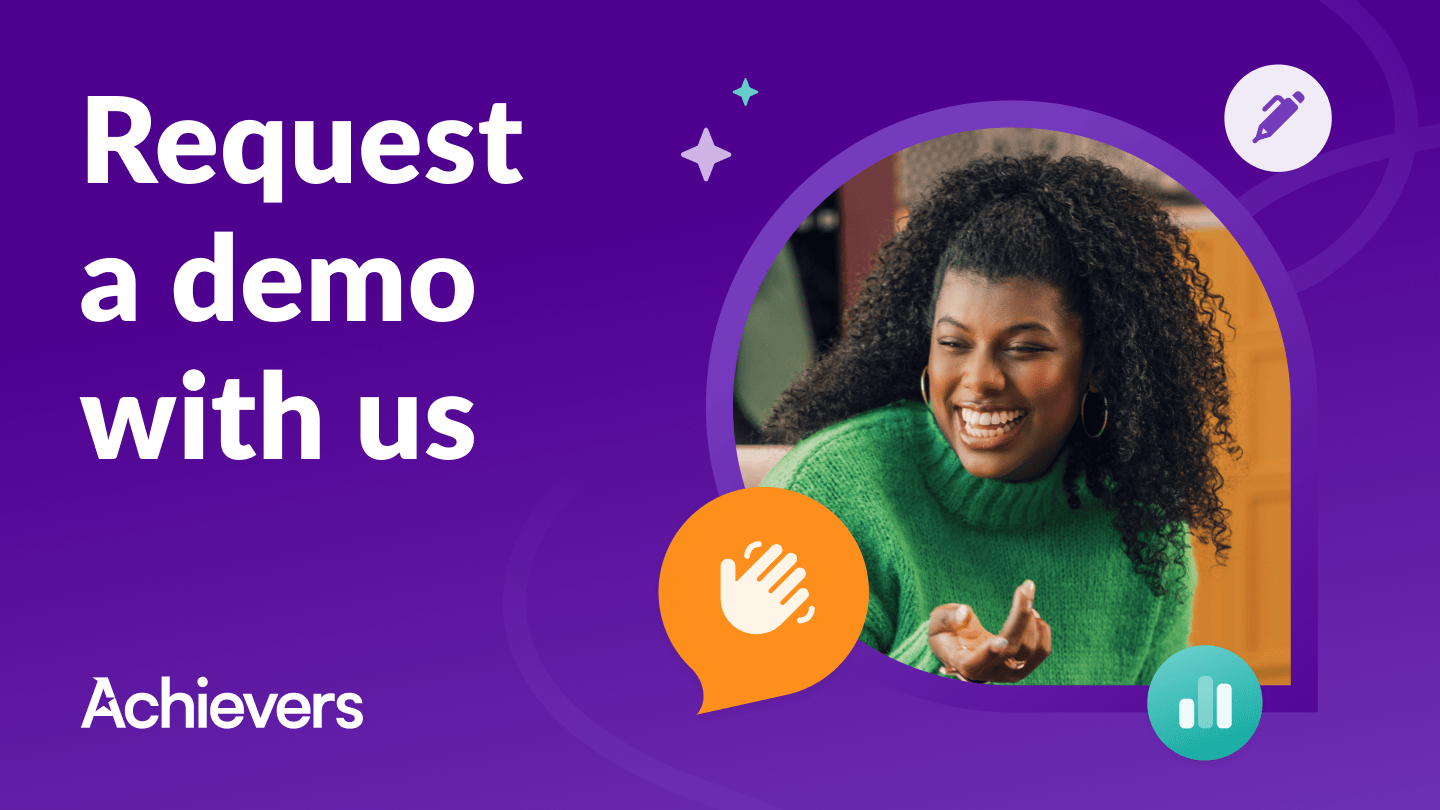Table of contents
Many businesses create detailed customer personas to inform marketing strategies and product development. But they neglect to make the same investment in understanding their own employees by crafting employee personas.
These personas are easy-to-use tools that provide valuable insights into the unique characteristics, behaviors, and aspirations of different segments of your workforce. They help your organization satisfy and engage its employees on a daily basis, allowing your people leaders to tailor HR initiatives, training programs, and employee experiences to better meet team members’ needs.
This is your complete guide to leveraging employee personas at your company, from understanding what they are, to reviewing four of the most common types, to the steps you can follow to craft personas that suit your workforce.
What is an employee persona?
An employee persona is a representation of a specific portion of the workforce at an organization. Similar to customer personas, employee personas are created based on research and data analysis to accurately capture workers’ diverse traits and needs. They reflect aggregate traits and patterns observed across the workforce rather than focusing on individual employees’ personalities. When crafted carefully, employee personas provide a framework for understanding and engaging with employees in a more targeted and effective manner.
Employee personas encompass various dimensions of the employee experience, like career aspirations, communication preferences, and work styles. By synthesizing these attributes into distinct personas, HR professionals and other stakeholders can humanize the workforce and design employee-centric programs that drive engagement, retention, and productivity.
Personas can assist with everything from designing training programs tailored to different skill levels and interests to establishing career paths aligned with employees’ aspirations to developing a culture of recognition and belonging.
4 types of employee personas
There’s no limit to the range of employee personas, as they reflect the infinite variety of your team members’ personalities. That being said, there are some common persona types that are used across organizations. Here are four that might suit your workforce.
1. Socializer
Socializer personas represent employees who prioritize collaboration and social interaction in the workplace. These individuals thrive in environments where teamwork, networking, and camaraderie are valued, and they often excel in roles that require strong interpersonal skills and emotional intelligence. Socializer personas are characterized by their outgoing nature, ability to connect with others, and willingness to contribute to a positive and inclusive work culture.
A socializer persona may be prevalent among sales representatives, customer service agents, and team leaders who rely on effective communication and relationship-building to succeed in their roles. These individuals enjoy opportunities for collaboration, brainstorming sessions, and team-building activities. By understanding the socializer personas within their workforce, your organization can design employee engagement initiatives, communication strategies, and team-building events that cater to their need and talent for socialization.
2. Director
Employees with director personas are likely to excel in leadership roles and enjoy guiding others toward achieving common goals. They possess strong strategic vision, decision-making skills, and the ability to inspire and motivate employees to perform at their best. Director personas are typically assertive and can navigate teams through complex challenges.
Senior executives, department heads, and managers are just some of the positions you might find directors in. Your company can motivate and nurture directors by implementing leadership development programs, succession planning strategies, and mentorship initiatives.
3. Thinker
Thinker employee personas have analytical and strategic minds and are often valued for their problem-solving abilities and critical thinking skills. Thinker personas enjoy diving deep into complex problems and exploring new ideas to drive organizational growth. They’re able to quickly synthesize information and generate innovative solutions to business challenges.
You may encounter thinker personas among data analysts, researchers, and engineers. Organizations should identify thinkers to leverage their analytical skills to inform business strategies, optimize processes, and maintain a competitive advantage.
4. Supporter
Supporters focus on empathy and relationship-building. They’re characterized by their compassion and dedication to helping others succeed. Supporter employees are valued for their ability to create positive work environments, foster team cohesion, and assist their colleagues.
These workers thrive in roles that require understanding and active listening, like HR professionals, team coordinators, and customer support representatives. Supporters foster an environment of inclusion and psychological safety, improving employee morale and retention.
Employee persona examples
Wondering how to fit your team members into the box of an employee persona? Let’s take a look at some examples of employees and the persona qualities that they display.
Sarah, the collaborator
Sarah is a seasoned sales representative known for her exceptional interpersonal skills and collaborative approach to work. She enjoys team environments, often initiating brainstorming sessions and fostering open communication among her colleagues. Sarah’s ability to build strong relationships with clients and colleagues alike makes her an invaluable member of the sales team, as she consistently seeks out opportunities for working together and knowledge sharing to achieve common goals.
John, the organizer
John is a project manager with strong attention to detail and great organizational skills. He’s skilled at breaking down complex projects into manageable tasks, establishing clear timelines, and delegating responsibilities. John’s structured approach to project management ensures that tasks are completed on time and within budget, making him a trusted leader at his company and a driving force behind successful project deliveries.
Emily, the innovator
Emily is a marketing strategist known for her creative ideas and vision. She thrives when she can explore new opportunities and challenge the status quo with new concepts. Emily’s passion for driving growth and differentiation in the marketplace fuels her creativity. She continuously seeks out new methods for elevating her organization’s brand and delighting customers with compelling marketing campaigns that engage them in unexpected ways.
David, the leader
David is a senior executive known for his strong leadership skills. He excels in roles where he can set strategic direction, make critical decisions, and inspire others to achieve their full potential. David’s decisive leadership style and commitment to excellence drive organizational growth and success as he navigates the company towards its long-term goals with confidence and foresight.
Mia, the analyst
Mia is a data analyst known for her analytical prowess and problem-solving skills. She likes to interpret data, identify trends, and provide insights to assist leaders and other team members. Mia’s analytical mindset and commitment to continuous learning make her a valuable asset to the analytics team.
5 steps to creating employee personas
Creating employee personas is a structured process that involves gathering insights and synthesizing information to develop detailed profiles of the various employee groups within your organization. Here are five steps to guide you through the process of developing accurate and actionable employee personas.
1. Define your objectives
First, lay out what you intend to achieve by creating employee personas. What specific insights do you want to gain? These might include the pain points and challenges faced by different employees, as well as what motivates them and drives their behavior. By framing your objectives in terms of actionable insights, you can ensure that employee personas provide valuable guidance to decision-makers.
Whether you’re looking to boost employee engagement, jumpstart talent development, or elevate the employee experience, defining your goals at the outset ensures that the personas you create will help accomplish organizational priorities.
2. Collect data and identify employee groups
After defining your objectives, it’s time to gather data relevant to the persona development process. This data should encompass everything from job roles to employee feedback and performance metrics. To keep an updated stream of data flowing to your leaders in real time, adopt an employee engagement solution with modern tools like pulse surveys and chatbots.
You should then identify distinct employee groups within the organization. Analyze the data to identify common patterns and characteristics among different groups of employees, organizing them into segments that share similar attributes, needs, and behaviors. By segmenting your workforce, you can create more targeted and relevant personas that address the specific needs and preferences of each group.
3. Develop initial employee personas
The next step is to develop detailed employee personas for each employee group. Use the insights you’ve gathered to create realistic and representative personas that accurately reflect the diversity and complexity of the workforce, capturing the key attributes of the individuals within each group. Humanize the personas by giving them names, narrative scenarios, and personal anecdotes that bring them to life. This helps stakeholders empathize with the personas and understand their needs and motivations more deeply.
4. Validate and refine your personas
Once you’ve developed initial personas, validate them by soliciting feedback from stakeholders across your company. Share the employee personas with HR professionals, managers, and other employees to gather input on their accuracy, relevance, and usefulness, encouraging stakeholders to provide feedback on whether the personas resonate with their experiences. Use these insights to iterate on the personas to ensure that they truly reflect the diverse needs of your workforce.
5. Use personas to improve your organization
Employee personas won’t be of much use unless you take advantage of them to improve your organization’s culture and processes. They should guide the design and implementation of programs and policies to ensure they address the specific preferences of all types of employees. This might take the form of preventing burnout, creating personalized training offerings, or implementing a new employee recognition program.
To keep employee personas top of mind among managers, HR professionals, and other people leaders as these programs move forward, integrate personas into relevant workshops, presentations, and other meetings. Explain what employee personas are and how leaders can use them to ensure these stakeholders are aligned with your persona-driven initiatives.
Build and act on employee personas today
There’s one solution that can help you complete every part of the employee persona process, from gathering and analyzing data to putting the personas you build to work: the Achievers Employee Experience Platform. It includes all the tools needed to understand and engage your workforce, starting with Achievers Listen, a centralized location for uncovering employee insights and taking meaningful action. With science-backed surveys and always-on, AI-powered chatbots, you’ll always have real-time information on all the key aspects of your workforce at your fingertips.
The Achievers Employee Experience Platform also features Achievers Recognize, a market-leading recognition platform that empowers your team members to show appreciation for personal and professional wins. It’s backed by a best-in-class rewards marketplace with merchandise and experiences from over 2500 brands.
Employees using Achievers Recognize are 3.6 times more likely to send multiple recognitions compared to the competition. By leveraging these powerful tools and others, you can create an employee experience that resonates with every persona, driving higher levels of engagement and performance throughout your organization.
Try the Achievers employee engagement software demo today to learn more about how the Achievers Employee Experience Platform can help you understand and motivate your workforce.





